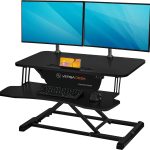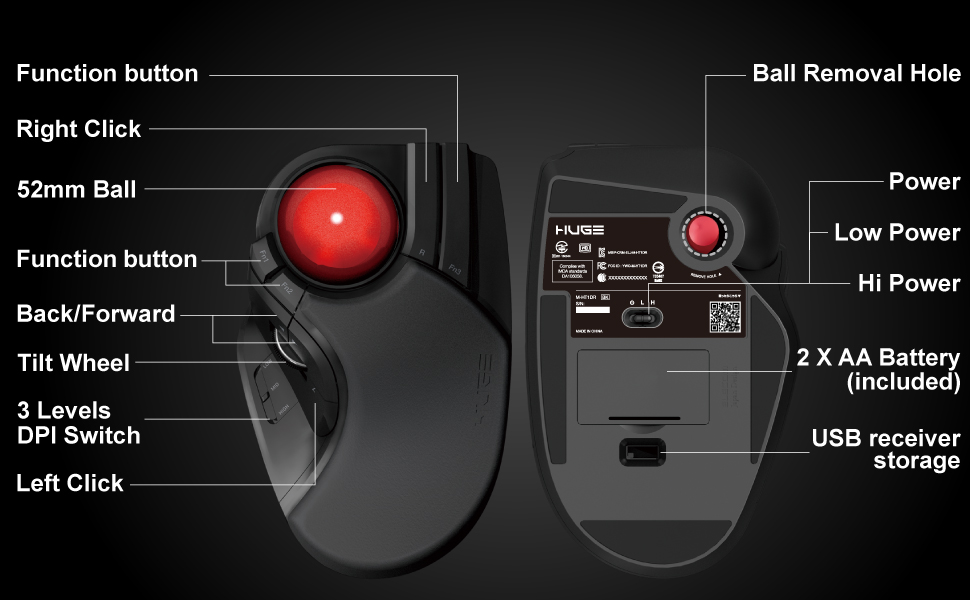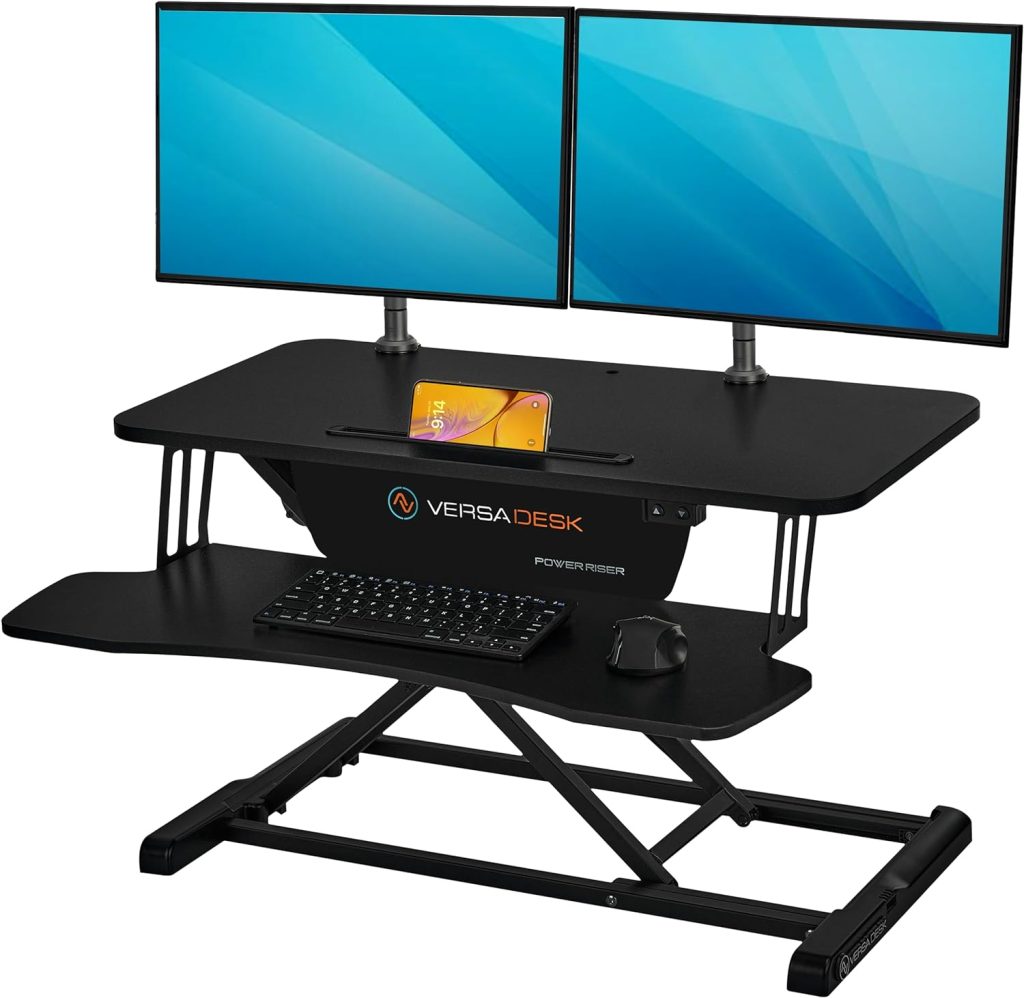For people who spend a lot of time typing, wrist and hand pain can be a real concern. Ergonomic keyboards are designed to address this issue by promoting a more natural hand and wrist posture. The Kinesis Advantage360 Professional Split Ergonomic Keyboard is one such option, boasting a unique split design, adjustable tenting, and a contoured shape. But with a hefty price tag, is it worth the investment?
This review will take a comprehensive look at the Kinesis Advantage360, exploring its features, benefits, and potential drawbacks. We’ll also analyze real user experiences to give you a well-rounded picture of this keyboard’s strengths and weaknesses.
Are you a programmer, writer, or anyone who spends hours typing every day? Do you ever experience wrist pain or discomfort while typing? If so, an ergonomic keyboard like the Kinesis Advantage360 could be a game-changer. But before you hit “buy,” this review will equip you with the information you need to make an informed decision.
In this in-depth review, we’ll cover the following:
- Chapter 1: Designed for Comfort: Exploring the Kinesis Advantage360’s Ergonomic Features
- Chapter 2: A Split Decision: The Pros and Cons of This Unique Keyboard Layout
- Chapter 3: Beyond Ergonomics: Customizability and Functionality of the Advantage360
- Chapter 4: What the Users Say: Real-World Experiences with the Kinesis Advantage360
- Chapter 5: The Verdict: Is the Kinesis Advantage360 Right for You?
This review aims to be informative and unbiased, providing you with the insights you need to determine if the Kinesis Advantage360 is the right ergonomic keyboard for your needs and budget. So, whether you’re a seasoned keyboard aficionado or just starting your ergonomic journey, keep reading to find out if the Kinesis Advantage360 lives up to the hype!
1. Designed for Comfort: Exploring the Kinesis Advantage360’s Ergonomic Features
If you’re a regular typist, you already know the importance of a good keyboard. But for those who spend extended hours typing away, a standard keyboard can wreak havoc on your wrists and hands. Repetitive strain injuries (RSIs) like carpal tunnel syndrome are a common complaint among heavy typists, leading to pain, discomfort, and even a decline in productivity.
This is where ergonomic keyboards come in. Designed to promote a more natural hand and wrist posture, ergonomic keyboards can significantly reduce strain and discomfort while typing. The Kinesis Advantage360 Professional Split Ergonomic Keyboard is a prime example, boasting a range of features specifically tailored to enhance your typing experience and well-being.
Contoured Split Design: The Heart of Ergonomic Comfort
The most striking feature of the Kinesis Advantage360 is its split design. Unlike traditional keyboards where the keys are all laid out in a straight line, the Advantage360 separates the keyboard into two halves. This allows you to position each half at an angle and distance that feels most comfortable for your shoulders and arms. This split design helps to reduce strain on the forearms and promotes a more natural hand position, minimizing wrist ulnar deviation – the uncomfortable twisting that occurs when using a standard keyboard.
Think of it like this: Imagine your arms hanging naturally by your sides. Now, picture yourself typing on a regular keyboard. Your hands are likely angled inwards, putting undue stress on your wrists. With a split keyboard like the Advantage360, you can position the halves so your forearms are straighter, mimicking that relaxed, natural arm position.
Finding Your Perfect Angle with Adjustable Tenting
The Kinesis Advantage360 goes beyond just a split design. It also incorporates adjustable tenting, allowing you to further customize the angle of each keyboard half. This tenting feature elevates the palm rests, creating an even more natural slope for your hands and wrists. The Advantage360 offers three tenting positions to choose from, giving you the flexibility to find the perfect angle that minimizes wrist strain and keeps your hands comfortable throughout your typing session.
Concave Keywells and Thumb Clusters: A Perfect Fit for Your Fingers
The Kinesis Advantage360 isn’t just about positioning; it’s also about providing a comfortable typing surface for your fingers. The keyboard features contoured keywells with a concave design. These molded wells gently cradle your fingertips, guiding them into a natural typing position and reducing finger fatigue. Additionally, the Advantage360 incorporates integrated thumb clusters. These clusters position your thumbs in a more relaxed and neutral zone, eliminating the need to reach for space and other keys, further reducing strain on your hands and wrists.
Ortholinear Layout: A Different Approach for Experienced Typists
The Kinesis Advantage360 utilizes an ortholinear key layout. This means the keys are arranged in a grid pattern, with each key positioned directly above or below the one next to it. This layout differs from the standard staggered layout found on most keyboards. While some users new to ortholinear keyboards may experience an initial adjustment period, proponents of this layout claim it allows for a more efficient and comfortable typing experience once muscle memory adapts.
Beyond Comfort: The Palm Supports and Optional Wrist Rests
The Kinesis Advantage360 comes equipped with integrated palm supports. These provide additional comfort and help to maintain proper hand positioning. However, some users may prefer a more pronounced level of wrist support. For those individuals, Kinesis offers optional palm pads that can be purchased separately. These additional palm rests further elevate your wrists, potentially offering increased comfort for long typing sessions.
Built to Last: Durability and Quality Materials
When you invest in an ergonomic keyboard, you expect it to be built to last. The Kinesis Advantage360 boasts a sturdy construction with high-quality materials. The keycaps are made from PBT plastic, known for its durability and resistance to wear and tear. The keyboard itself is built with a solid plastic chassis that feels substantial and secure on your desk.
Taking a Break from the Standard: Highlighting Key Differences from Traditional Keyboards
While the Kinesis Advantage360 offers a plethora of ergonomic benefits, it’s important to acknowledge that it differs significantly from traditional keyboards. Here’s a quick breakdown of some key differences:
- Learning Curve: Due to the split design, ortholinear layout, and potentially unfamiliar key placement, there may be an initial adjustment period as you get used to the Advantage360.
- More Desk Space: The split design of the Advantage360 requires more desk space compared to a standard keyboard.
- Travel Considerations: The separate halves of the keyboard may not be ideal for frequent travelers due to the increased size and potential need for separate cables.
Conclusion: A Feature-Rich Ergonomic Powerhouse, But is it Right for You?
The Kinesis Advantage360 Professional Split Ergonomic Keyboard is undeniably packed with ergonomic features designed to enhance comfort and reduce strain for frequent typists. The split design, adjustable tenting, contoured keywells, and ortholinear layout all work in concert to promote a more natural hand and wrist posture.
However, before you rush out and buy one, it’s important to consider your individual needs and preferences. Here are some additional factors to keep in mind:
- Your Typing Style: If you’re a touch typist who relies heavily on muscle memory, the ortholinear layout might require some initial re-learning.
- Available Desk Space: The split design takes up more desk real estate than a traditional keyboard. Ensure you have sufficient space for comfortable use.
- Budget: The Kinesis Advantage360 comes with a premium price tag. Weigh the potential benefits against the cost to determine if it’s a worthwhile investment for you.
- Technical Expertise: While the Kinesis Advantage360 offers onboard programmability, some users report the process can be complex. If you’re not comfortable with technical aspects, it might be a turnoff.
Making an Informed Decision: Consider Your Needs
Ultimately, the decision of whether the Kinesis Advantage360 is right for you depends on your individual needs and preferences. If you’re a heavy typist who suffers from wrist pain or discomfort, and you’re willing to invest in a premium ergonomic keyboard, the Advantage360 is definitely worth considering. Its wealth of ergonomic features and customization options could significantly improve your typing experience and well-being.
On the other hand, if you’re a casual typist who doesn’t experience any hand or wrist issues, or if you’re on a tight budget, a more traditional ergonomic keyboard might be a better fit. Additionally, if you’re someone who dislikes change or finds the idea of learning a new keyboard layout daunting, the Advantage360 might not be the best choice.
The Next Steps: Exploring Further and Making Your Choice
The Kinesis Advantage360 is a unique and well-regarded ergonomic keyboard. However, it’s not a one-size-fits-all solution. By carefully considering the features, potential drawbacks, and your own typing habits and needs, you can make an informed decision about whether this keyboard is the right investment for you.
In the following chapters, we’ll delve deeper into the Advantage360’s functionality and programmability, explore real user experiences, and ultimately help you decide if this ergonomic powerhouse is the key to a more comfortable and pain-free typing experience.
2. A Split Decision: Pros and Cons of the Kinesis Advantage360’s Unique Layout
The Kinesis Advantage360’s split design is its most distinctive feature, and it’s the element that generates the most debate among users. This chapter will explore the advantages and disadvantages of this split approach, helping you decide if it aligns with your typing style and preferences.
Pros: Enhanced Ergonomics and Comfort
- Reduced Wrist Strain: The split design allows you to position the keyboard halves at a wider angle, minimizing ulnar deviation and promoting a more natural hand and wrist posture. This can significantly reduce wrist strain and discomfort, especially for those who experience pain while typing for extended periods.
- Improved Shoulder Alignment: By separating the halves, you can position them to better match your shoulder width. This helps to improve shoulder alignment and reduce tension in the upper body.
- Increased Customization: The split design allows for a higher degree of customization compared to traditional keyboards. You can adjust the distance and angle of each half to find the perfect setup for your individual needs.
Cons: Potential Adjustment Period and Learning Curve
- Muscle Memory Shift: If you’re a touch typist accustomed to a standard keyboard layout, the split design and potentially unfamiliar key placement of the Advantage360 might require an adjustment period. It may take some time to retrain your muscle memory to locate keys efficiently on the split layout.
- Increased Desk Space Requirement: Due to the split design, the Kinesis Advantage360 takes up more desk real estate than a traditional keyboard. Ensure you have sufficient space on your desk to comfortably accommodate the separated halves.
- Travel Considerations: The separate halves and potentially additional cables can make the Advantage360 less portable than a standard keyboard. If you travel frequently for work and need a keyboard that can easily pack up, the split design might be a drawback.
Beyond the Split: Additional Considerations for the Ortholinear Layout
The Kinesis Advantage360 utilizes an ortholinear key layout, where keys are arranged in a grid pattern. While some users swear by its efficiency, others find it requires some adaptation. Here’s a breakdown of the pros and cons:
- Pros:
- Potentially More Efficient Keystrokes: Proponents of ortholinear layouts claim that the straight line column arrangement can lead to more efficient finger movements and faster typing speeds once muscle memory adapts.
- Reduced Finger Travel: The grid layout can potentially minimize finger travel distances, particularly for keys further away from the home row.
- Cons:
- Initial Learning Curve: For touch typists used to the staggered layout of traditional keyboards, the ortholinear layout might feel unnatural at first.
- Mental Remapping: You might need to mentally remap the location of certain keys in your mind, especially those further away from the home row.
Ultimately, the decision of whether the split design and ortholinear layout are right for you depends on your individual needs and preferences. If you’re a touch typist who prioritizes comfort and ergonomics over immediate typing speed, the potential benefits of the split design and ortholinear layout might outweigh the initial adjustment period.
However, if you’re a casual typist who doesn’t experience any discomfort with a standard keyboard and value a familiar layout, you might be better suited with a traditional ergonomic keyboard that utilizes a staggered layout.
The next chapter will delve into the Kinesis Advantage360’s functionality and explore how the split design and layout can be further customized to fit your typing style.
3. Beyond Ergonomics: Customizability and Functionality of the Advantage360
The Kinesis Advantage36 thumbles beyond just a comfortable typing experience. It boasts a surprising amount of functionality and customization options, allowing you to tailor the keyboard to your specific workflow and preferences.
Onboard Programming and Open-Source Options
The Advantage360 features onboard programming capabilities. This means you can remap keys, create macros, and adjust various settings directly on the keyboard without relying on additional software. It’s a convenient way to personalize your keyboard layout and shortcuts for frequently used actions.
However, for more advanced customization, the Kinesis Advantage360 embraces the power of open-source options. The keyboard is compatible with open-source firmware like ZMK and QMK, allowing for deeper customization possibilities. Through these open-source platforms, you can:
- Create Complex Macros: Program intricate macros to automate repetitive tasks, saving you time and effort.
- Adjust Lighting: Control the brightness and behavior of the keyboard’s backlighting (available on the Pro model) to suit your preferences and lighting conditions.
- Fine-Tune Functionality: Fine-tune the keyboard’s behavior by adjusting settings like repeat rate and debounce time.
- Custom Layouts: For the truly adventurous, open-source firmware allows you to create entirely custom keyboard layouts, placing keys and functions exactly where you want them.
Wired or Wireless: Choosing Your Connection Method
The Kinesis Advantage360 comes in two variants: wired and wireless (Pro model). The wired version offers a reliable and consistent connection, perfect for those who prioritize stability and dislike battery concerns. The wireless Pro model utilizes Bluetooth connectivity, offering greater cable freedom and a cleaner desk setup. However, some users report occasional Bluetooth connectivity issues with the Pro model.
Media Keys and Hotkeys: Streamline Your Workflow
The Kinesis Advantage360 incorporates dedicated media keys and hotkeys, allowing you to quickly control volume, playback, and other frequently used functions without interrupting your workflow. Additionally, the programmable nature of the keyboard allows you to assign custom hotkeys to specific applications or actions, further enhancing your productivity.
A Learning Curve for Advanced Customization
While the Kinesis Advantage360 offers a wealth of customization options, it’s important to acknowledge that unlocking its full potential can involve a learning curve. Onboard programming provides a good starting point, but venturing into open-source firmware customization might require some technical knowledge and comfort navigating code.
Matching Functionality to Your Needs
The level of customization you desire will depend on your individual needs. If you’re happy with a basic keyboard layout and minimal adjustments, then the onboard programming features might be sufficient. However, for power users who crave ultimate control and personalization, the open-source firmware options unlock a world of possibilities.
The next chapter will explore real user experiences with the Kinesis Advantage360. We’ll see how different users leverage the keyboard’s features and functionalities, and how their experiences can help you decide if the Advantage360 aligns with your typing style and workflow.
4. What the Users Say: Real-World Experiences with the Kinesis Advantage360
The Kinesis Advantage360 is a unique keyboard with passionate advocates and cautious users. This chapter dives into real user experiences to provide a well-rounded perspective on the keyboard’s strengths and weaknesses.
Comfort is King (or Queen) for Many Users
A recurring theme in positive reviews is the undeniable ergonomic comfort offered by the Advantage360. Users who previously experienced wrist pain or discomfort while typing rave about the keyboard’s ability to alleviate these issues. The split design, adjustable tenting, and contoured keywells are frequently praised for promoting a more natural hand and wrist posture.
Here’s a quote from one satisfied user: “After years of battling carpal tunnel, the Kinesis Advantage360 has been a game-changer. The split design allows me to type for extended periods without any pain or discomfort. It’s truly an ergonomic marvel.”
The Learning Curve Can Be a Hurdle
While many users adapt to the split design and ortholinear layout without significant issues, others report a challenging initial adjustment period. Touch typists accustomed to the traditional staggered layout might find it takes time to retrain their muscle memory to locate keys efficiently on the Advantage360.
One user shared their experience: “I love the ergonomic benefits of the Advantage360, but it definitely took some getting used to. The first few weeks were frustrating as I fumbled for keys. However, once I adjusted, my typing speed returned, and the comfort is undeniable.”
Customization: A Double-Edged Sword
The Kinesis Advantage360’s programmability is a double-edged sword. Some users appreciate the ability to personalize the keyboard layout and shortcuts to their workflow. However, others find the process of onboard programming or venturing into open-source firmware customization daunting.
A user commented: “The ability to remap keys and create macros is fantastic! I’ve customized the Advantage360 to perfectly suit my workflow, saving me tons of time. However, I can see how someone unfamiliar with programming might find it overwhelming.”
Wireless Connectivity Concerns with the Pro Model
While the wireless freedom of the Pro model is appealing, some users report occasional Bluetooth connection issues. This can be frustrating and disrupt workflow.
One user shared their frustrations: “The Bluetooth connection on the Pro model can be flaky at times. It’s not a deal-breaker, but for the price, I expect a more consistent connection.”
Not for Everyone: Considering Your Needs
Reading through user experiences, a common thread emerges: the Kinesis Advantage360 isn’t for everyone. While it excels in ergonomics and offers a wealth of customization options, the potential learning curve, unique layout, and higher price point might not be ideal for all typists.
A user summed it up well: “If you’re a casual typist who doesn’t experience hand pain, a standard ergonomic keyboard might be sufficient. But for those who suffer from wrist issues and value ultimate comfort and customization, the Advantage360 is worth considering, even with the initial adjustment period.”
By understanding the strengths and weaknesses highlighted by real users, you can make a more informed decision about whether the Kinesis Advantage360 is the right ergonomic keyboard for you.
The next chapter will combine the insights from user experiences with the information covered so far to help you decide if the Kinesis Advantage360 is a worthwhile investment for your typing needs.
5. The Verdict: Is the Kinesis Advantage360 Right for You?
The Kinesis Advantage360 Professional Split Ergonomic Keyboard is a compelling option for those seeking an ergonomic solution to combat typing-related pain and discomfort. However, it’s not a one-size-fits-all solution. This final chapter will help you decide if the Advantage360 aligns with your typing style, needs, and budget.
Consider Your Typing Habits:
- Heavy Typist with Wrist Issues: If you spend long hours typing and experience wrist pain or discomfort, the Kinesis Advantage360’s ergonomic features can significantly improve your comfort and potentially reduce pain.
- Touch Typist: The split design and ortholinear layout might require an adjustment period for touch typists accustomed to traditional keyboards. Be prepared to invest some time in retraining muscle memory.
- Casual Typist: If you’re a casual typist who doesn’t experience any hand or wrist pain, a more affordable ergonomic keyboard with a familiar layout might be a better choice.
Evaluate Your Needs and Preferences:
- Customization Enthusiast: The Advantage360’s onboard programmability and open-source firmware options offer extensive customization possibilities for power users who crave ultimate control over their keyboard layout and functionality. However, be aware that unlocking its full potential might involve a learning curve.
- Simplicity Seeker: If you prefer a simple and straightforward keyboard experience with minimal adjustments, the Kinesis Advantage360’s onboard programming features might be sufficient.
- Desk Space: The split design requires more desk real estate than a traditional keyboard. Ensure you have sufficient space for a comfortable setup.
- Budget: The Kinesis Advantage360 comes with a premium price tag. Weigh the potential benefits against the cost to determine if it’s a worthwhile investment.
Key Takeaways from User Experiences:
- Ergonomic Bliss: Many users report a significant reduction in wrist pain and discomfort after switching to the Advantage360.
- The Adjustment Curve: Be prepared for a potential learning curve, especially if you’re a touch typist accustomed to a traditional layout.
- Customization Can Be Complex: While the customization options are powerful, some users find the process daunting.
- Wireless Connectivity Concerns: The Pro model’s Bluetooth connection can be occasionally unreliable.
The Final Decision: Invest or Explore Further?
If you prioritize ergonomic comfort, are willing to invest in a premium keyboard, and don’t mind a potential adjustment period, the Kinesis Advantage360 is a strong contender. Its wealth of ergonomic features and customization options can significantly improve your typing experience and well-being.
However, if you’re a casual typist on a tight budget, prioritize a familiar layout, or dislike the idea of a learning curve, then exploring other ergonomic keyboards with traditional layouts might be a better option. There are many excellent ergonomic keyboards on the market that offer comfort features at a lower price point.
Ultimately, the decision of whether the Kinesis Advantage360 is right for you depends on your individual needs, preferences, and budget. We recommend carefully considering the information presented in this review alongside your own typing habits and priorities before making your final choice.
So, is the Kinesis Advantage360 the ultimate ergonomic keyboard? It depends on who you ask. But one thing is certain: it’s a unique and feature-rich option that can significantly improve the typing experience for those seeking the ultimate in comfort and customization.
This review has hopefully equipped you with the knowledge you need to make an informed decision. Happy typing!






